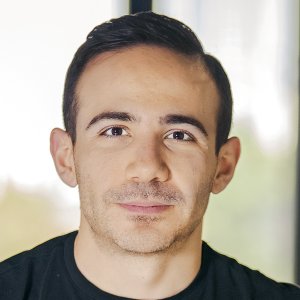Human Capital a Key Indicator of Legacy, Success

STORY INLINE POST
Human capital is a key component companies sometimes overlook when doing their long-term projections, says Joaquín Vargas, Executive President of CMR. “It is sometimes hard to make people the main priority. However, having the right people in the right positions and investing in them can help the company manage its projections over time.”
CMR, a Mexican restaurant operator with 147 restaurants in its portfolio across the entire country, has become one of Mexico’s top business leaders in the restaurant segment. Founded in 1965, CMR’s portfolio includes well-known brands in the Mexican market, such as Wings, Nescafé, Olive Garden, La Destilería and Chili’s, among others. In 2019, CMR decided to complement its brand portfolio, through the consolidation of the acquisition of Grupo DASI. The consolidation will lead to the integration of the Sushi Itto brand and of Novalimentos to CMR’s portfolio. This will generate growth of over 130 business units across the entire country, which adds to Vargas’ comments about CMR’s 50-year legacy, which is supported by a robust brand portfolio and having attracted and developed the right human capital.
Vargas adds that the road has not been easy, given that the Mexican restaurant industry constantly experiences volatility and has its own dynamism. “Opening a restaurant gives you the knowledge to operate it and it is also a good trampoline to open a second one. However, restaurateurs tend to fail when opening their eighth to 15 unit, since this type of operation requires smart human capital distribution and efficient management across different geographic regions.”
Staff turnover at operational levels is another key element that should be considered, Vargas says. “In the restaurant industry, the average staff turnover is 100 percent. CMR, on the other hand, has a turnover of between 65 and 75 percent.” These low levels are the direct result of the investments the company has made in terms of organizational culture. “It is not a matter of paying more but of working on a series of elements that provide value to employees, such as eliminating ambiguity in the decision-making process regarding human capital, generating a meritocratic culture and discussing career plans with employees.”
Just as other industries, the restaurant sector in Mexico has experienced significant changes over the years, in particular the entrance of US brands to the Mexican market. “Around 15 years ago, the casual dining business stopped growing in the US, which forced companies and investors to look for a way out to markets with potential like Mexico.” Change came not from the arrival of new brands per se but from the level of professionalization they brought to the sector. “New brands brought the knowledge and expertise they had developed to operate more complex restaurants in more developed economies.”
The market’s changing dynamics, combined with external factors, have also helped to generate a change in consumer habits. They are now demanding more local products and concepts. “Mexican gastronomy has been glorified by many social segments. This, combined with the growing interest in the origin of the food we eat, has made the Mexican consumer look for new options in the gastronomic landscape,” he says. This transformation also generates an interesting challenge for restaurant operators invested in the casual dining segment. “We operate foreign brands under a franchising scheme and we have a different cost structure that might appear less competitive than that of local players.” Vargas adds that CMR does not run away from change but embraces it, opening a new concept to cater to this new trend of consumption in Mexico. “We launched MUCHO, a concept that offers fresh Mexican food with local ingredients. The concept caters to consumers who are more conscious of what they are eating.”
While its restaurants continue to post good results, CMR is venturing into the near future with a more cautious approach. “If we were to only analyze our restaurants’ performance, we would be delighted and moving forward with investments. However, the uncertainty that we are seeing overall is forcing us to be more careful in our decisions,” Vargas says.
Still, Vargas says CMR will continue growing in the Mexican market. “We are expecting to continue growing organically with our current portfolio.” This does not mean, however, that the company is shying away from inorganic growth. “We have already brought some of the best of the world to Mexico. It is time to start working on sharing some of the best of Mexico with the world.”








 By Gabriela Mastache | Senior Journalist and Industry Analyst -
Tue, 04/07/2020 - 12:24
By Gabriela Mastache | Senior Journalist and Industry Analyst -
Tue, 04/07/2020 - 12:24
















